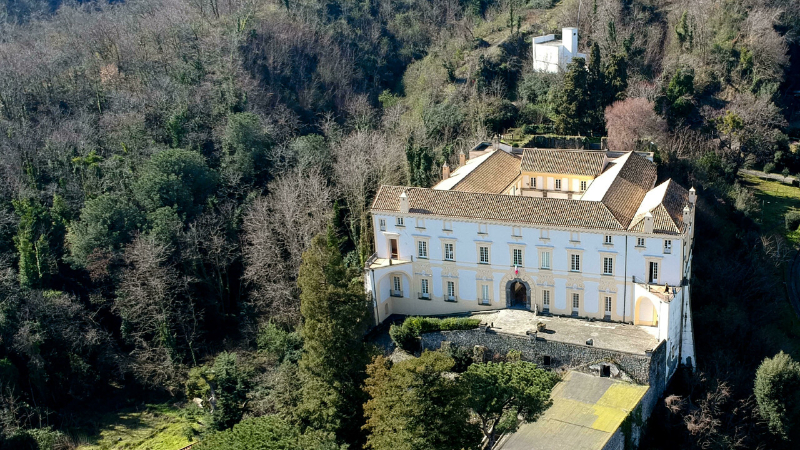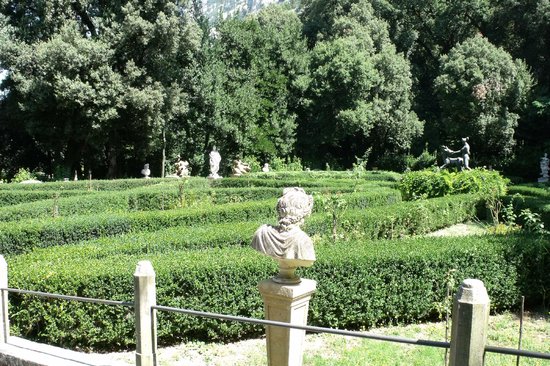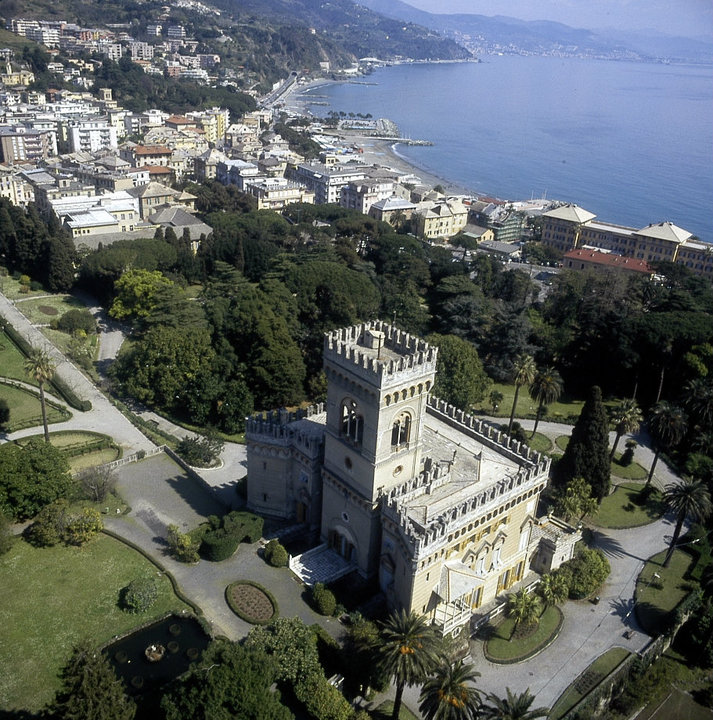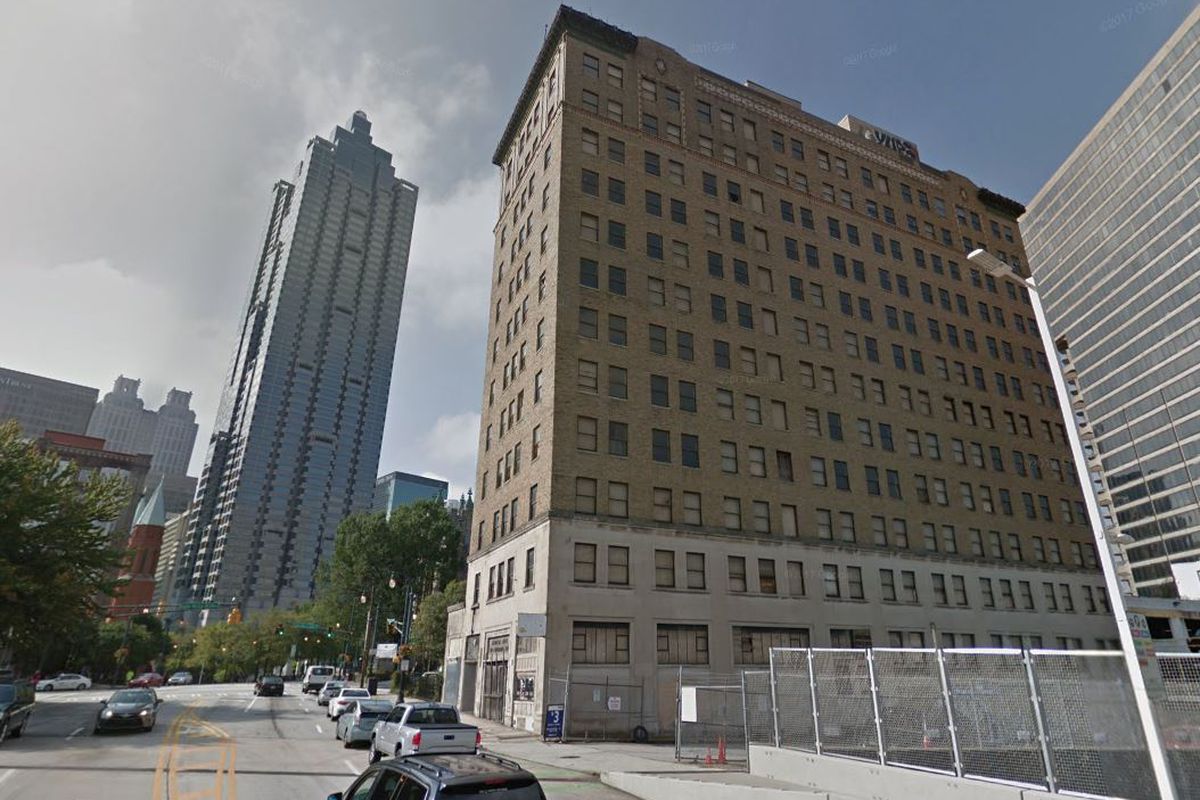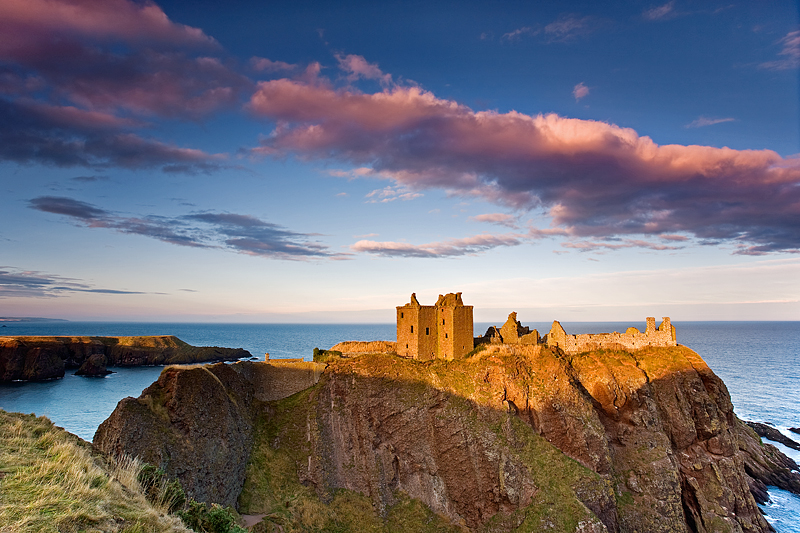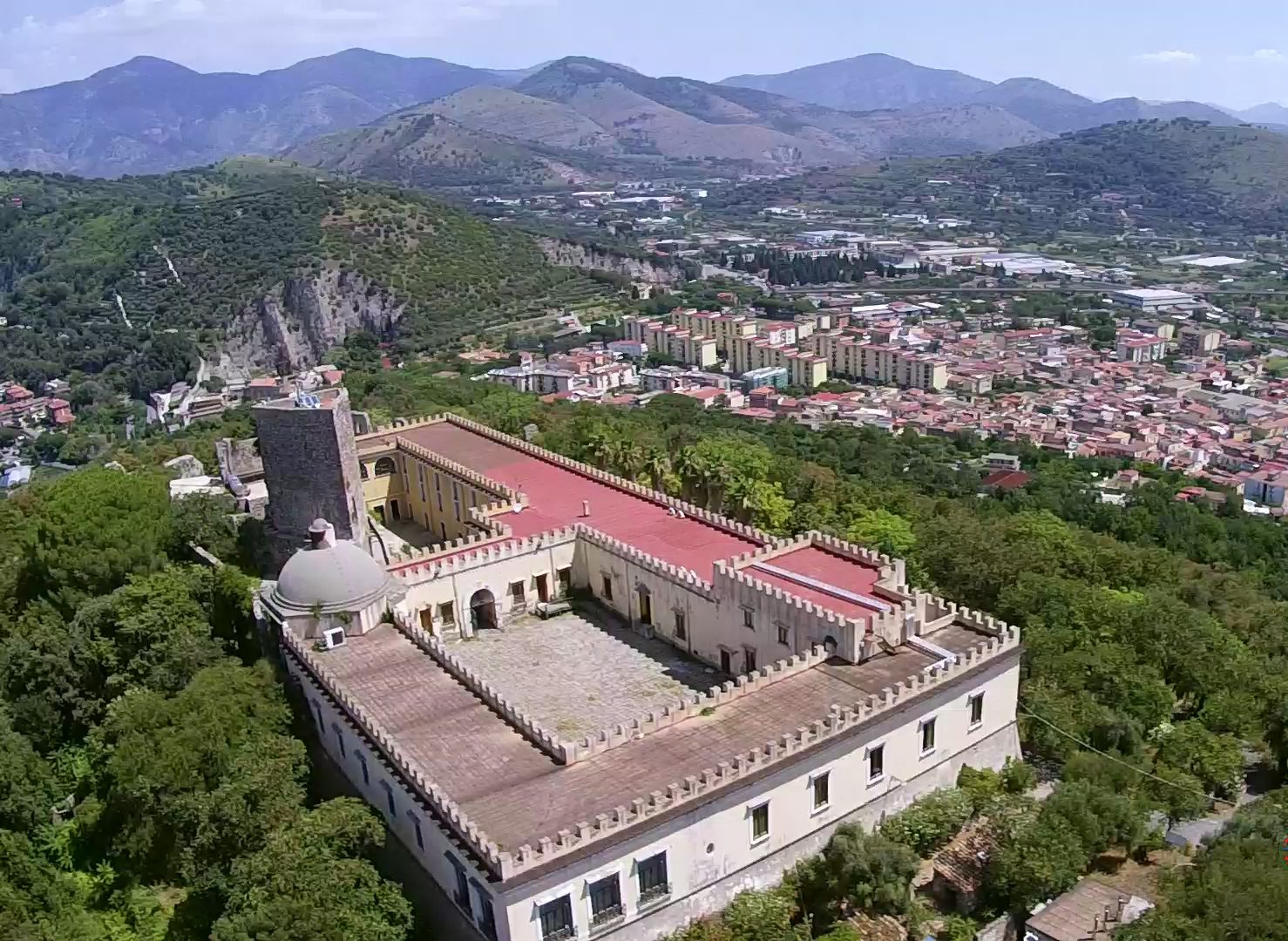The history of the Medicean Castle of Ottaviano begins with a Longobard settlement, built to ensure the control of the wide plain of Nola.
In the Middle Ages, several noble families controlled the area: the Del Tocco, the D’Aquino, the Orsini, and Fabrizio Maramaldo. The latter sold the property to the Gonzaga family of Molfetta. In 1085 the palace hosted Pope Gregorio VII and in 1304 it was destroyed by CarloD’Angiò to be then rebuilt by Bernardetto dè Medici, who bought it in 1567 together with the feud and the fortress, called by everybody “Palazzo del Principe”. Giuseppe I Medici, a leading figure in the history of Naples in the seventeenth century and of the Spanish viceroyalty, started the transformation of the gloomy fortress into a country palace.
But in reality it was Giuseppe II Medici who gave the palace the shape that we still admire today. The external facade was refined with a series of large windows, but the front facing the internal garden maintained the severity of the medieval castle.
The numerous rooms, with richly decorated ceilings and floors in majolica, overlook two internal courtyards, the second of which was reserved for theatrical and musical performances.
Joseph III also completed the beautiful stables and embellished the garden with many exotic plants. At the end of the eighteenth century Palazzo de’ Medici was certainly one of the most beautiful and innovative buildings in the area.
Among the last illustrious guests, Gabriele D’Annunzio who in 1892, came to live in the Palace, with his lover Maria Gravina Cruyllas.
Unfortunately, a worse fame has affected this castle in the recent 80’s, when the residence entered in the properties of the boss of organized crime Raffaele Cutolo.
In 1991, thanks to the confiscation, the castle returned to the availability of the community. What in the dark years had become a symbol of the Camorra has become a place of legality, culture and love for the environment. In fact, since 2003 it has been the headquarters of the Vesuvius National Park Authority.
